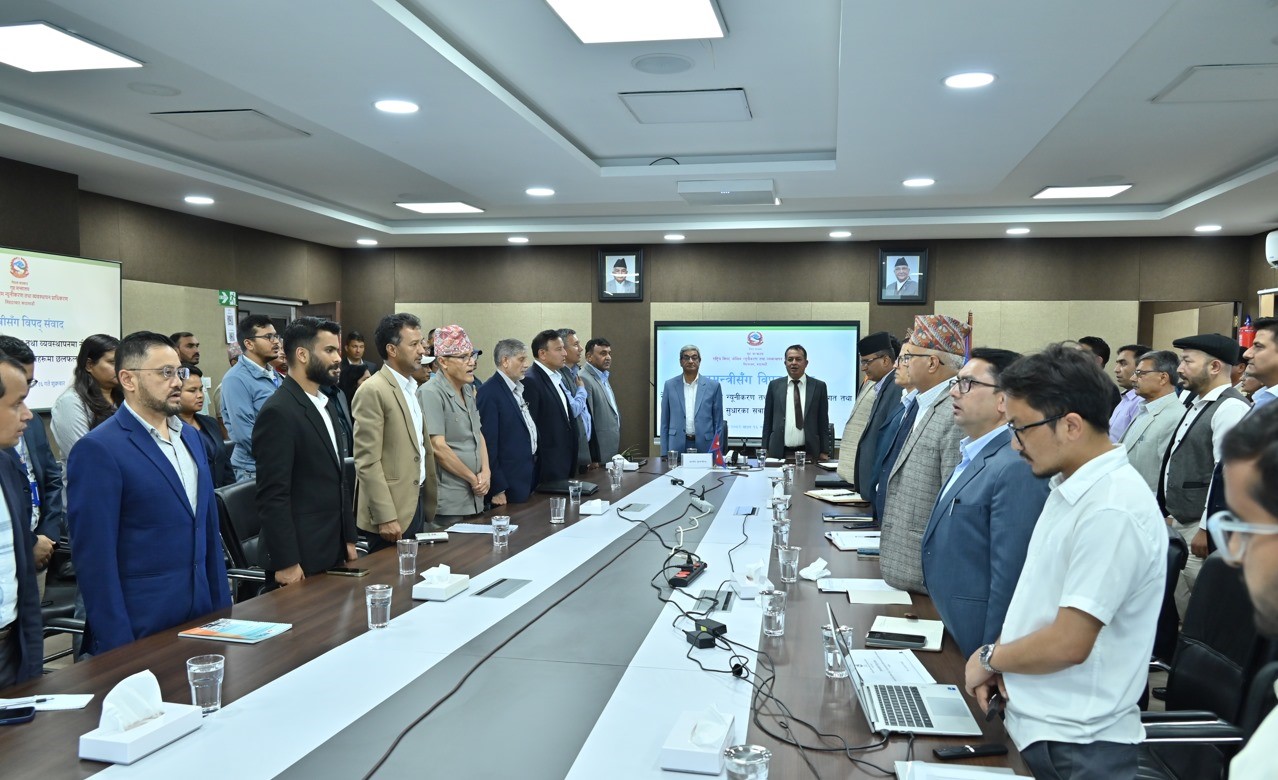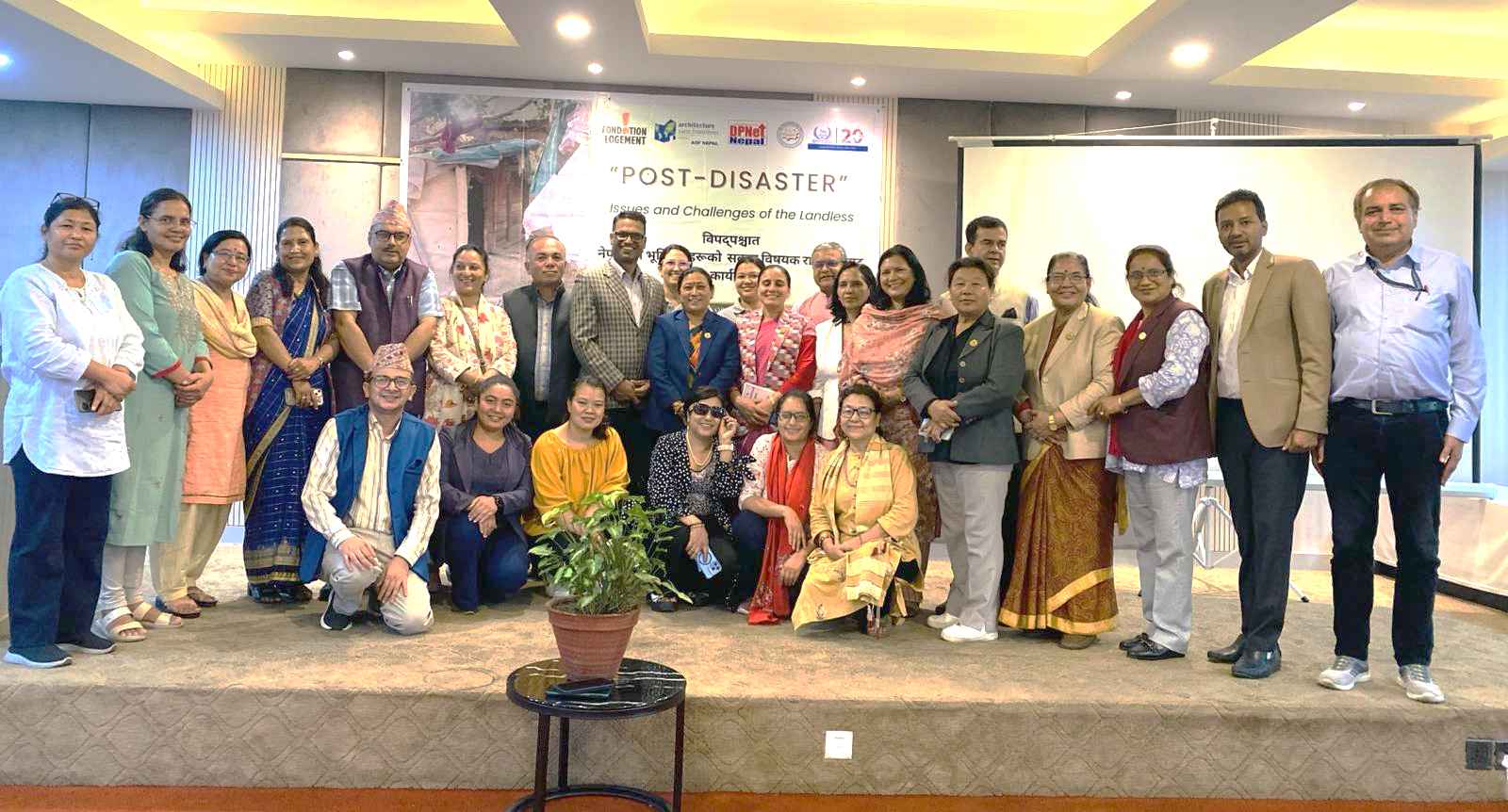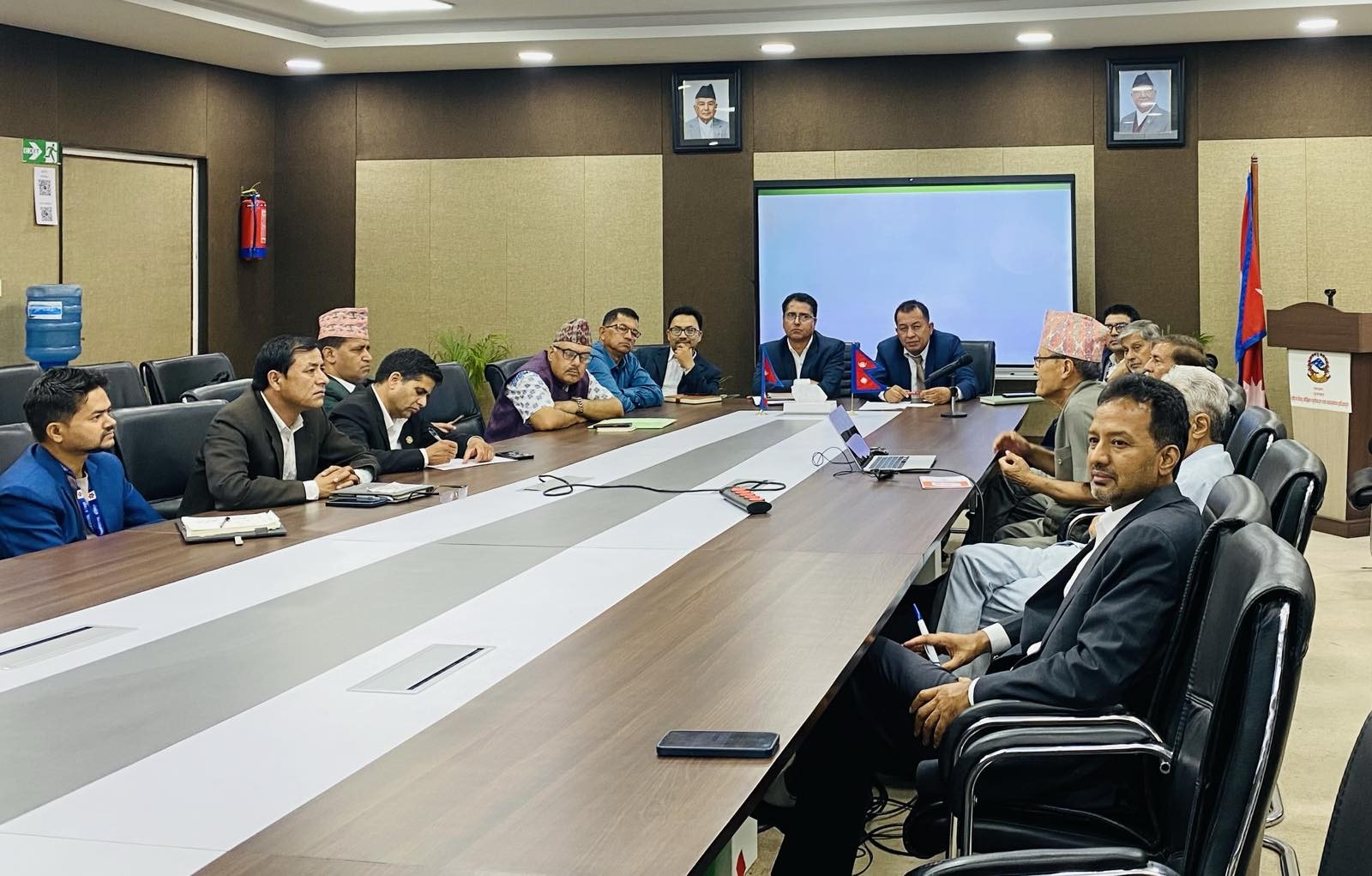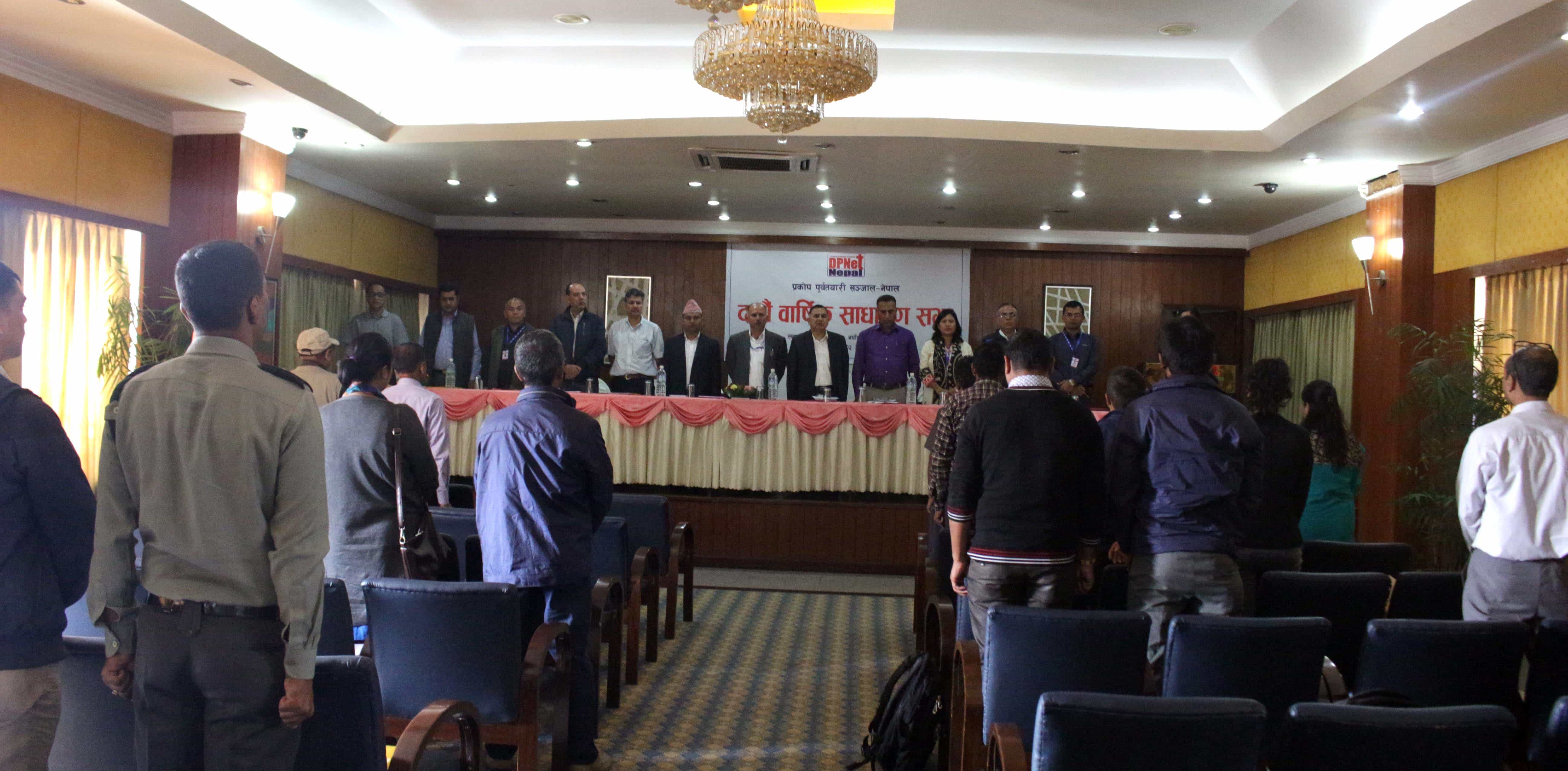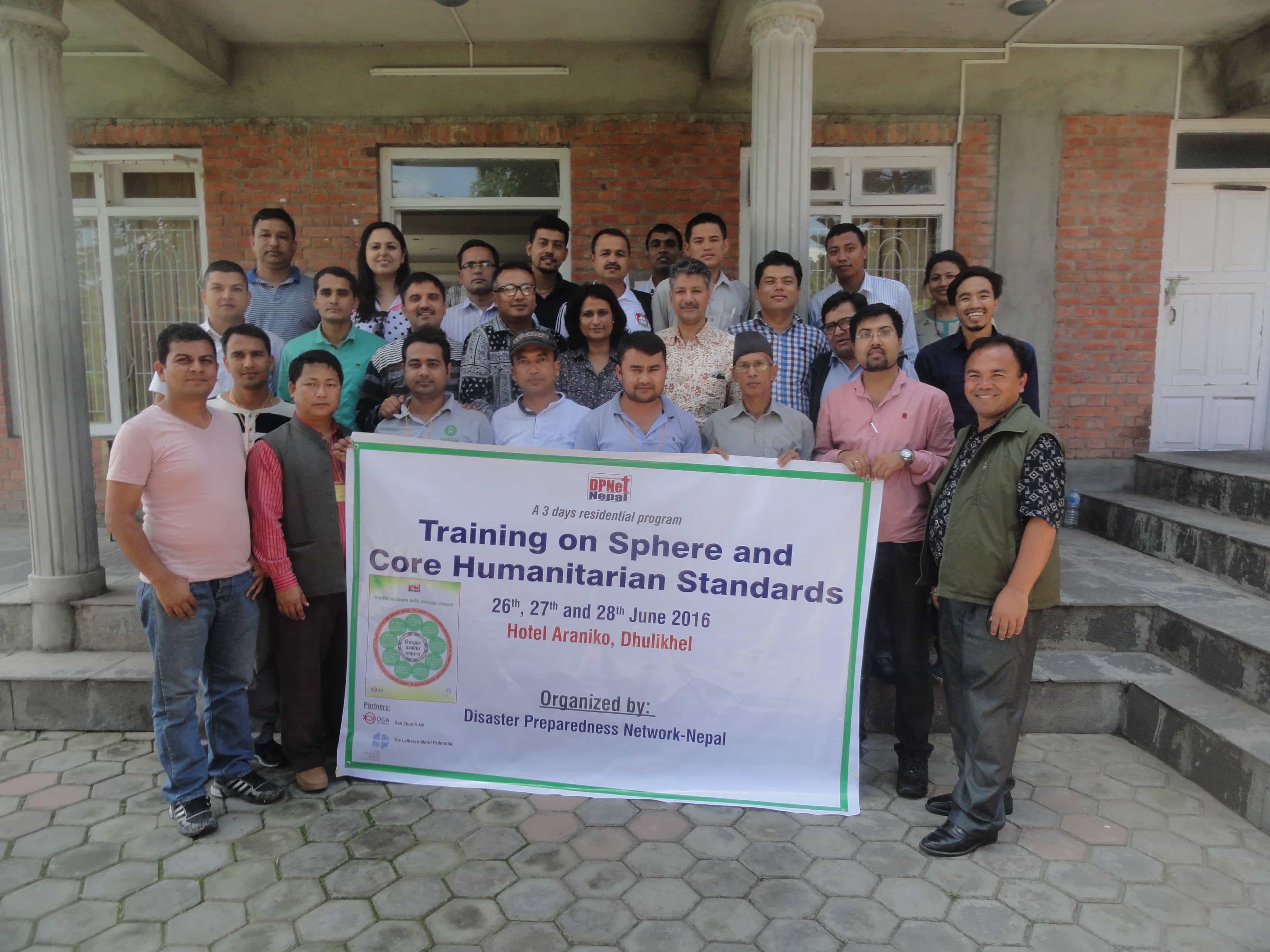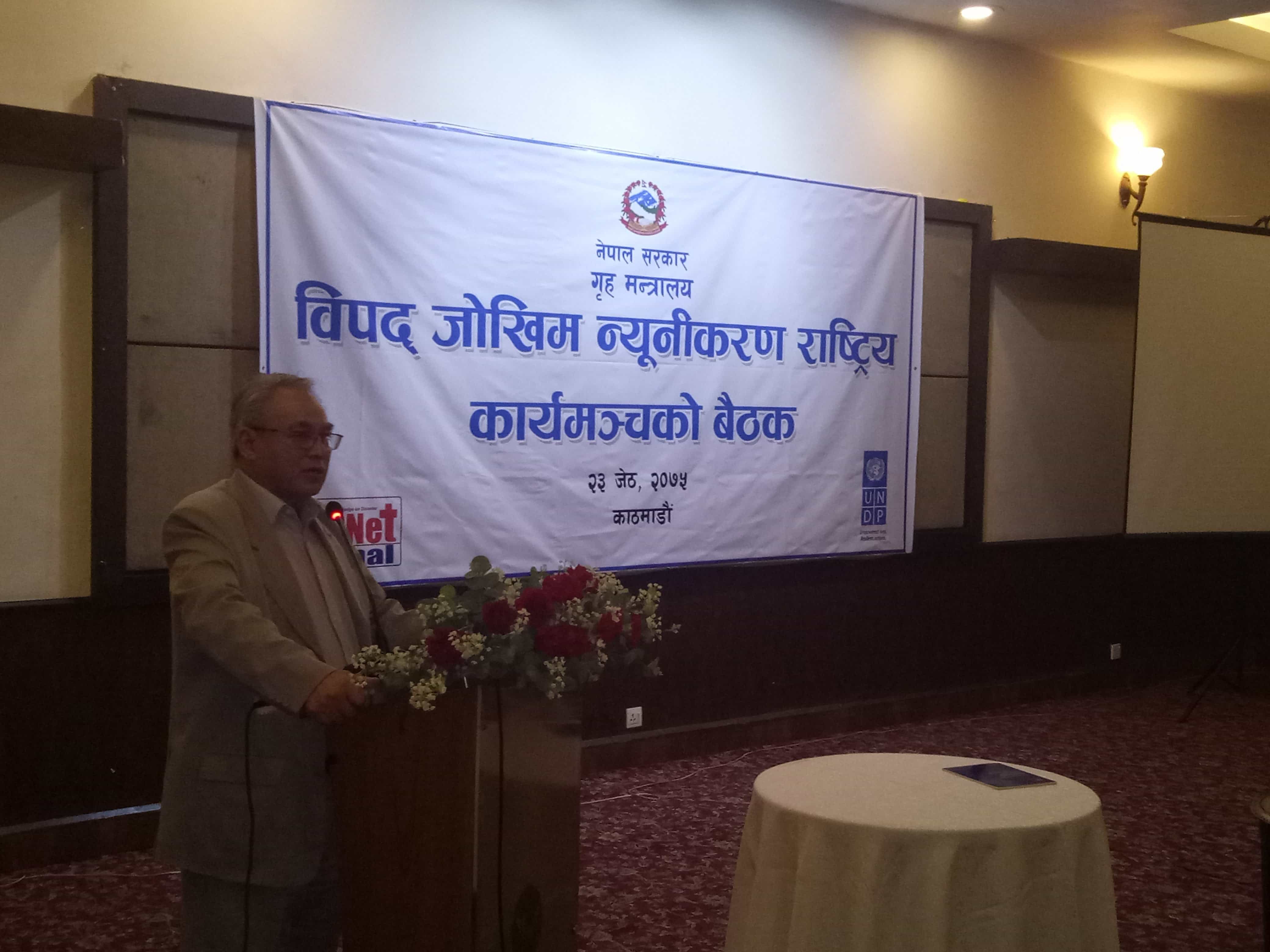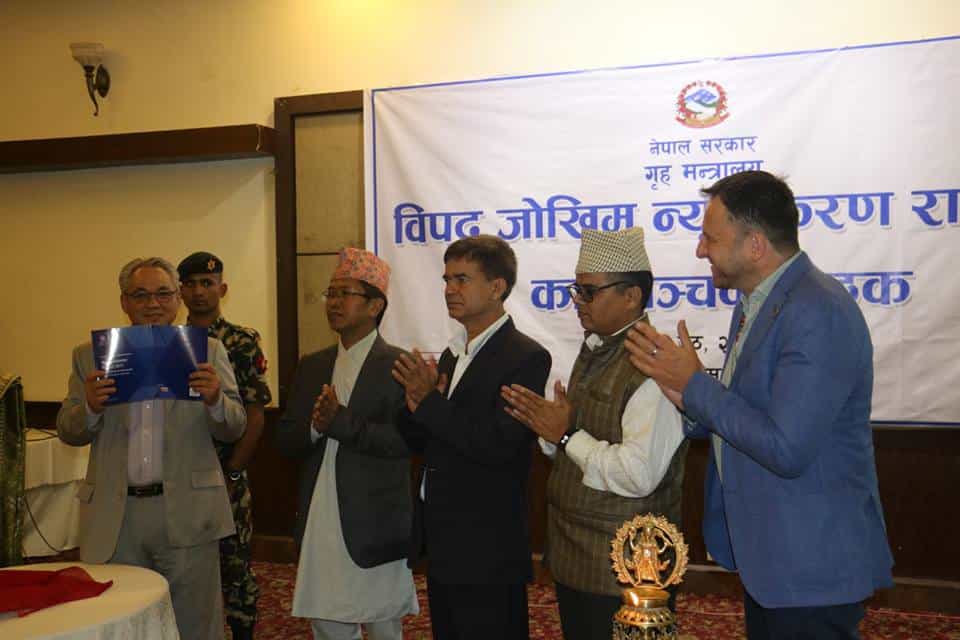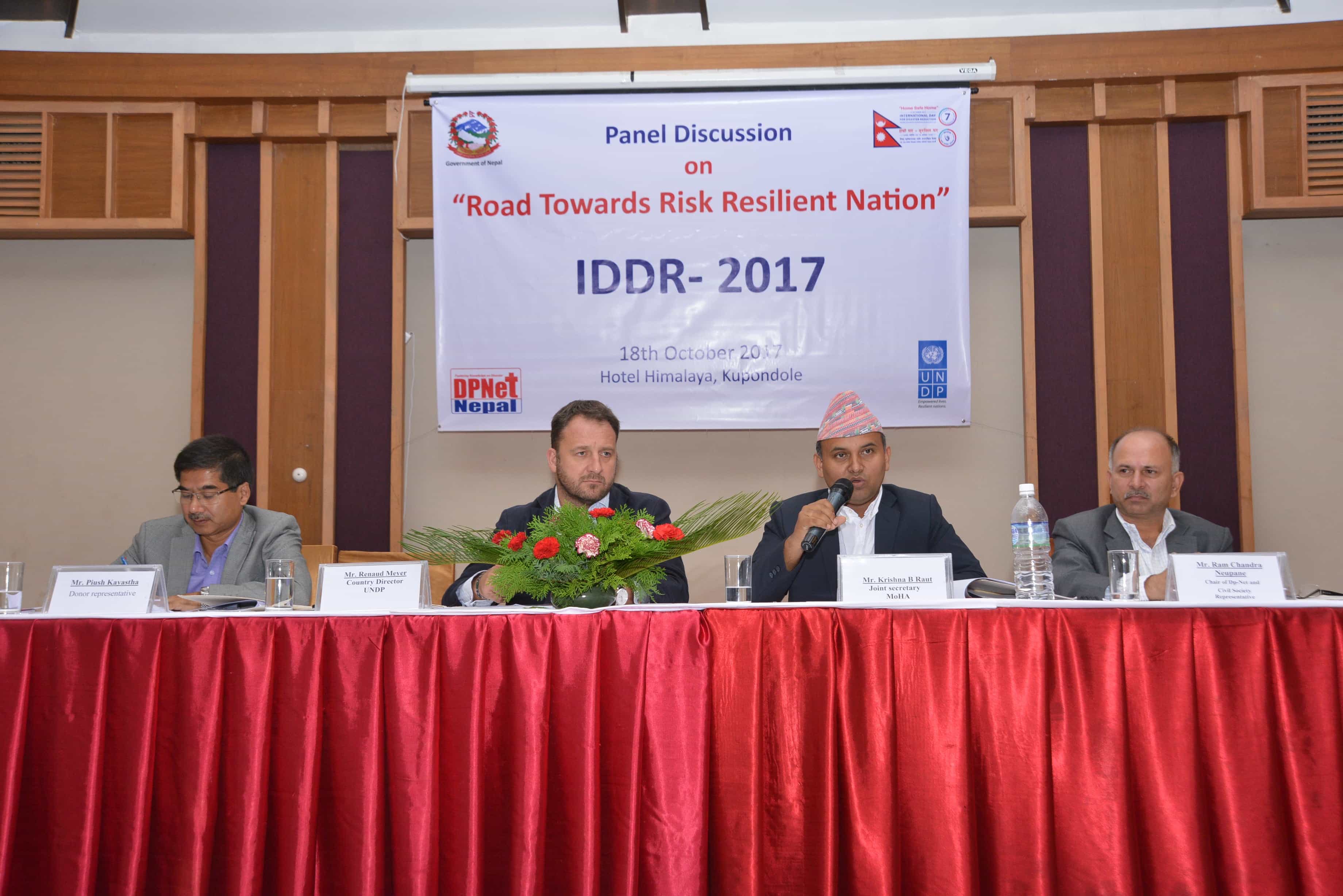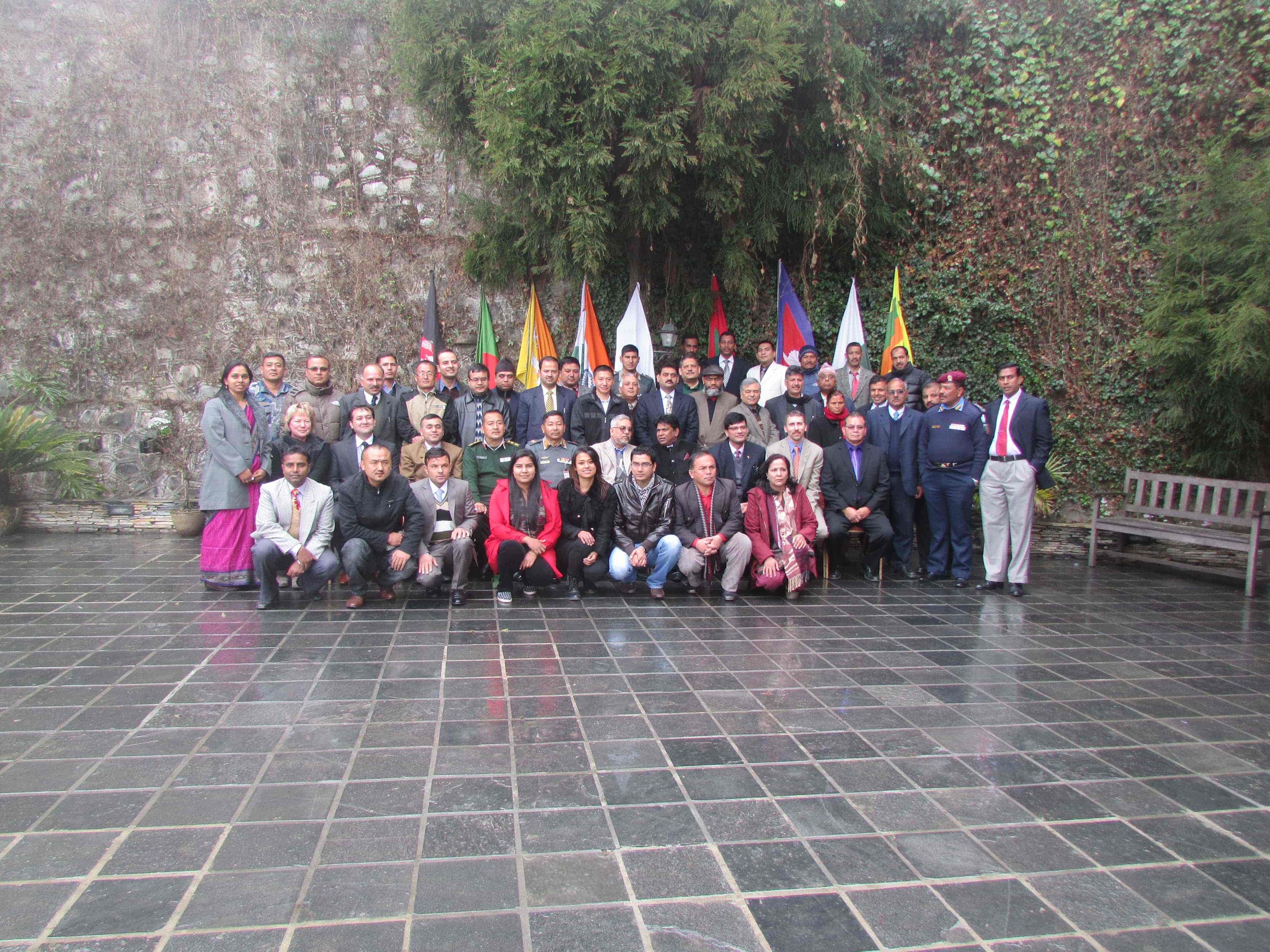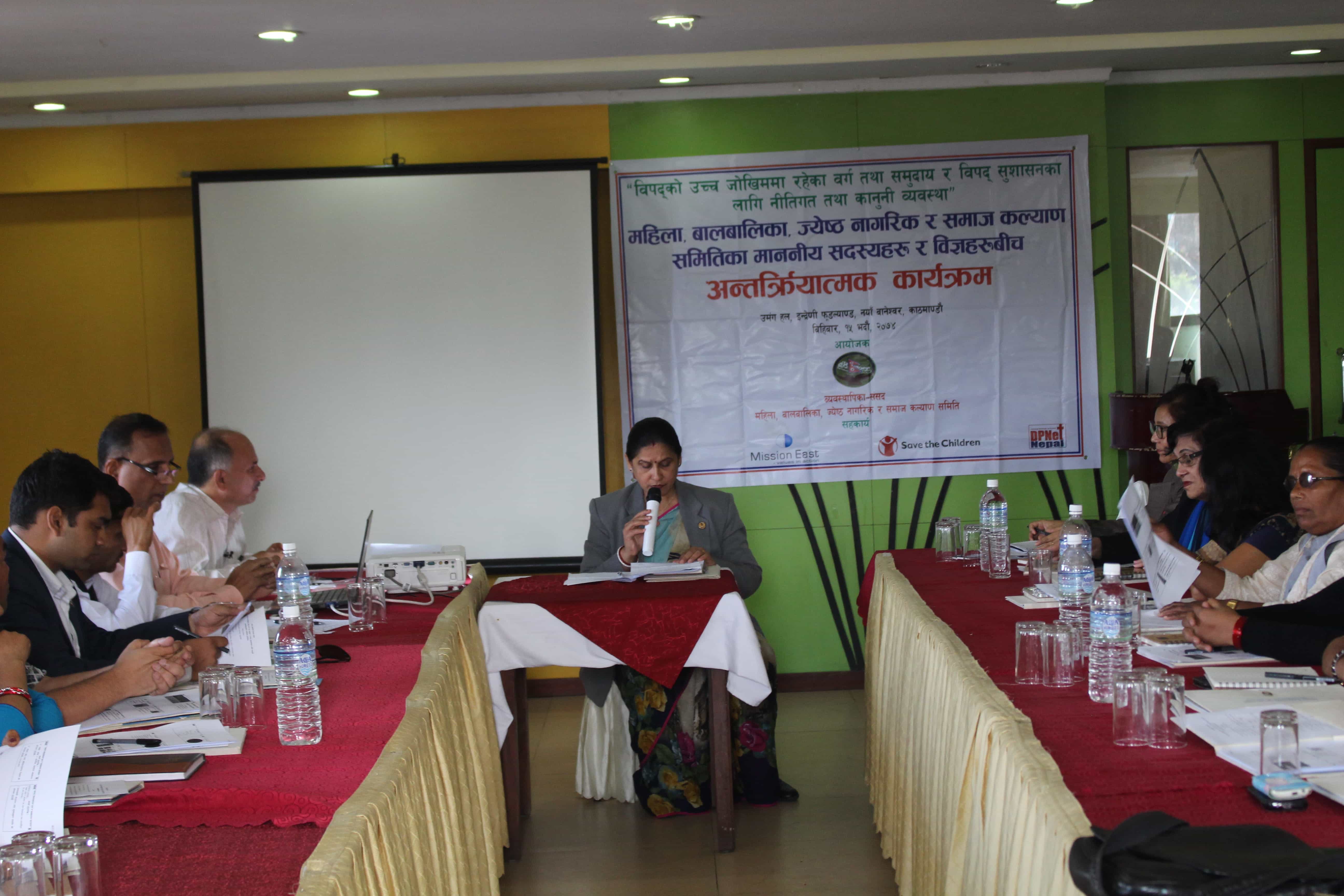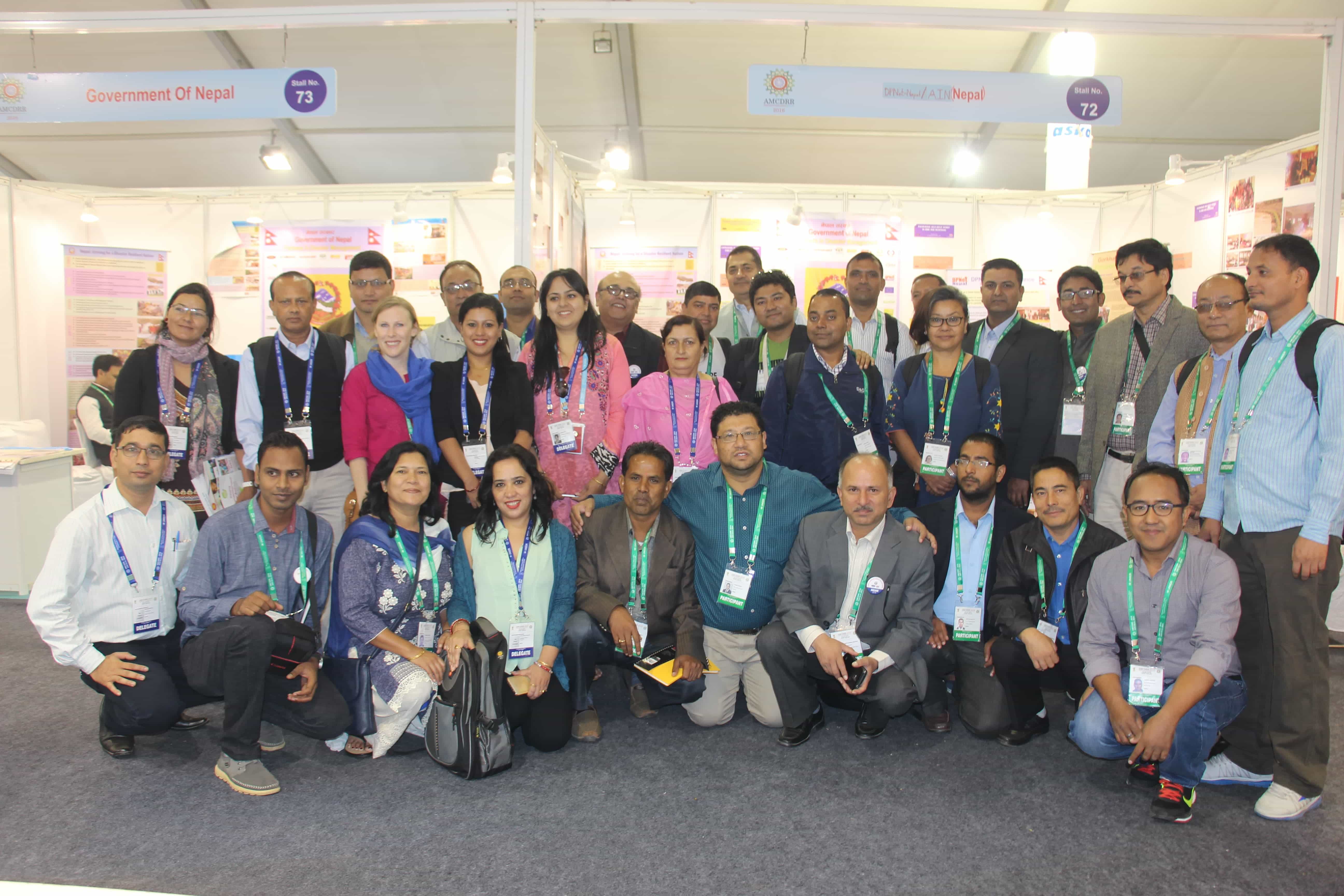Discussion Program on Engaging DRR Networks in Disaster Management
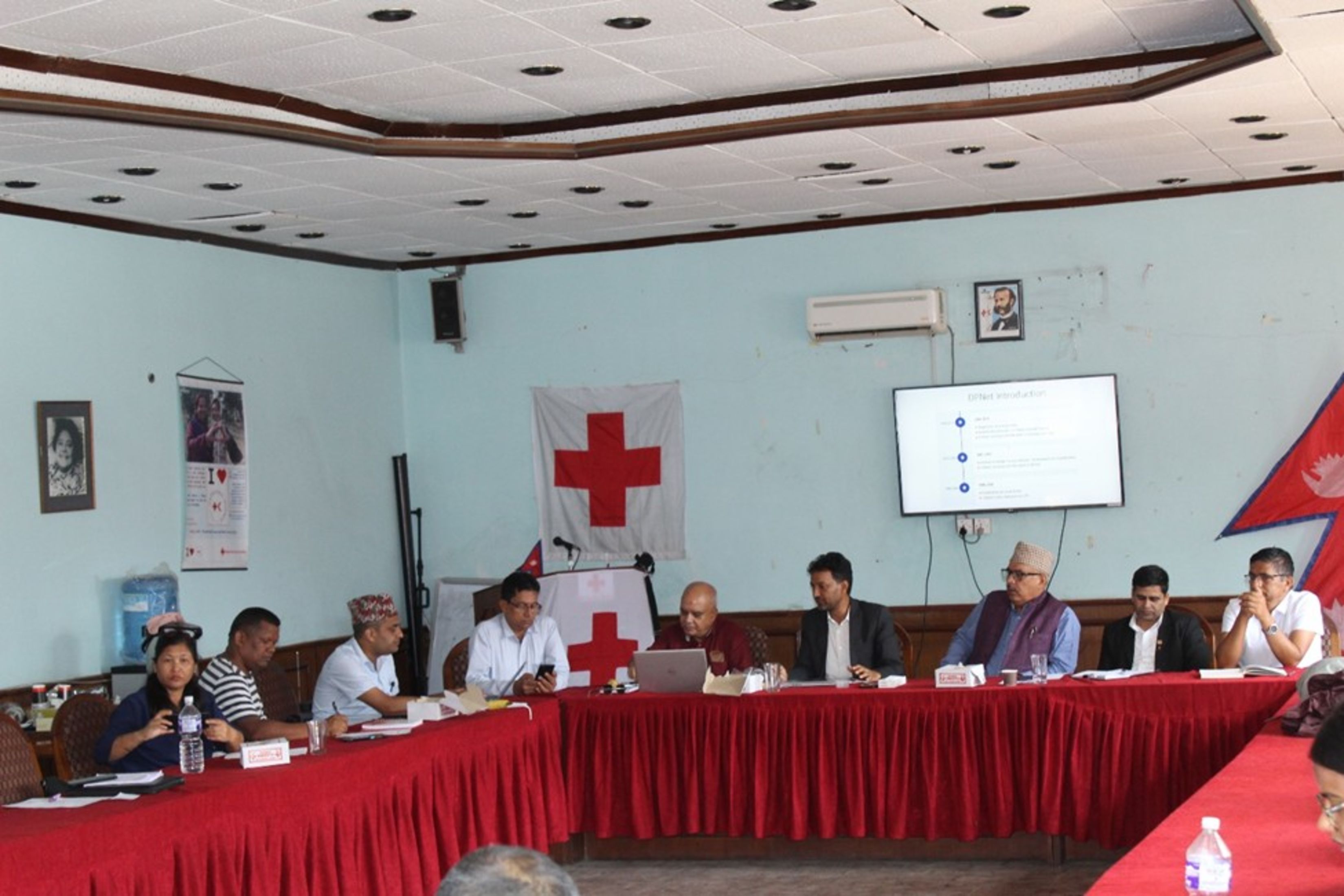
On July 15, 2024, DPNet Nepal, in collaboration with the Disaster Management Network Nepal (DiMaNN) and the National Network of Community Disaster Management Committees (NCDMC), organized a discussion program focused on engaging DRR Networks in DRR. Mr. Surya Bahadur Thapa, DPNet IPP and Chair of DiMaNN, facilitated the event, outlining its objectives. Dr. Raju Thapa, Chairperson of DPNet Nepal, chaired the program.
Mr. Surya Bahadur Thapa addressed the recent significant losses in Nepal caused by fires and monsoon-induced disasters. He outlined the objective of DPNet Nepal, which is to coordinate and collaborate among NGOs, INGOs, academia, the UN, and other stakeholders, as the NPDRR secretariat. Mr. Thapa emphasized that DiMaNN, a civil society member organization, and NCDMC, a community-level national network, along with DPNet, focus on advocacy efforts. DiMaNN and NCDMC concentrate on grassroots-level implementation. The networks collectively aim to leverage their strengths and collaborate with National and International development partners to achieve common objectives.
Dr. Raju Thapa, Chairperson, DPNet Nepal, emphasized that while Nepal has many networks, most are project-based, however, networks like DPNet, DiMaNN, and NCDMC, can survive without donor support. He expressed gratitude to the Nepal Red Cross Society for providing space for DPNet Nepal and highlighted the important roles played by DiMaNN and NCDMC. Dr. Thapa requsted development partners to include organizations like DPNet Nepal, DiMaNN, and NCDMC in project proposals. He stressed that sharing best practices through these three networks can help disseminate information among like-minded stakeholders. Dr. Thapa introduced DPNet Nepal, providing insights into its support mechanisms. He explained that DPNet Nepal, as the secretariat of NPDRR, coordinates national and international events like GPDRR, APMCDRR. With provincial committees in all seven provinces and around 171 member organizations, DPNet Nepal facilitate to parepare position papers and official statements through coordination and collaboration building common consensus. He also mentioned the organization's online resource center with over 1,600 resources and highlighted the qualitative Situation Analysis Reports for Bajhang and Jajarkot, e-bulletins, and weekly updates. Dr. Thapa outlined several potential areas for collaboration. These include establishing and strenthening provincial platforms for DRR, and hosting a national conference for learning and sharing. Additionally, he suggested planning and hosting provincial learning-sharing conferences, organizing a national conference on Chure issues, and advocating on relevant areas. He also highlighted DPNet's work on monsoon-induced disasters, including collecting and compiling media-generated information for record-keeping and its potential implications for future planning during monsoon preparedness. He added, “We are planning for the photo exhibition on Monsoon induced disaster content in coordination with Media after the end of Monsoon.” Dr. Thapa requested development partners to consider these potential areas of collaboration with DPNet Nepal and to include a component for networks like theirs in project proposals.
Mr. Rohit Kumar Yadav, Technical Advisor, DiMaNN, explained that DiMaNN was formally established in 2007 with a vision focused on community resilience, collaboration, and networking. The main concern is how to connect efforts from the grassroots level. DiMaNN is a member of International Networks like the Asian DRR Network and the Global Network of Civil Society Organisations for Disaster Reduction (GNDR). The objectives include capacitating volunteers and grassroots-level volunteers, bringing learnings from the grassroots level to the upper levels, and harmonizing DRR and resilience concepts. Addressing hurdles in achieving the SDGs, particularly concerning Gender Equality, Disability, and Social Inclusion (GEDSI), and implementing the DRM Act at the local level to support marginalized populations are also within DiMaNN's scope of work. The organization aims to take community-level innovations and good practices to the national level, focusing on capacity building, strengthening, and policy advocacy. Mr. Yadav highlighted the challenges in DRR governance, knowledge management, institutional development, research, and documentation. He acknowledged the strengths of DiMaNN and emphasized the need for its inclusion in proposals for lobbying and working areas. He advocated for the utilization of local resources and collaboration with local organizations. He also shared DiMaNN's organizational structure and its major ongoing activities, including learning-sharing sessions, awareness programs, seminars, technical support, and linkages with member organizations. Furthermore, Mr. Rohit outlined DiMaNN's future plans, which include improving disaster governance, providing training to local government representatives and civil society, organizing exposure visits, and promoting indigenous knowledge.
Mr. Bishnu Timilsina, General Secretary, DiMaNN, discussed various activities performed by DiMaNN, including celebrating national and international days, conducting virtual sessions, organizing workshops, sensitizing the media about its role, and raising school awareness regarding DRR. He mentioned advocating for incorporating many points into the directives issued by the National Human Rights Commission that directly related to disaster management including dignified humanitarian support. DiMaNN has also collaborated with the National Human Rights Commission and engaged national and international volunteers.
Mr. Surya Bahadur Thapa, highlighted that significant economic resources have been invested in DRR policy and regulation by development sectors. This effort culminated in the formulation of the DRRM Act and the establishment of the National Disaster Risk Reduction and Management Authority (NDRRMA). He noted that DiMaNN has been closely working with the National Human Rights Commission to formulate various policy documents.
Shyam Babu Kattel, Chairperson, NCDMC, emphasized the organization's deep roots in the community, unlike project-based networks that dissolve once their projects end, NCDMC continues its work at the community level, connecting various local networks into a cohesive national network. Established in 2068 BS, NCDMC includes national, international, and local networks working on disaster management, aiming to enhance collaboration with the government. The organization ensures representation at all levels and raises awareness about human rights across communities in Nepal. During the COVID-19 pandemic, NCDMC's programs and projects were affected, but they continued to support virtually. They have also advocated for forming local DRR funds and successfully pushed for a compensation policy for disaster-related deaths. NCDMC held its 4th General Assembly on Asar 16-17, 2081 BS, and organized policy dialogues, meetings with government and non-governmental organizations, and capacity-building activities, including volunteer training. Mr. Kattel highlighted the need for collaboration, expressing that NCDMC works in a collaborative way to advance disaster preparedness practices. The network comprises 704 CDMCs with around 5,000 people involved.
Mr. Surya Bahadur Thapa, pointed out that organizations like NCDMC, which are movement-based rather than proposal-based, offer valuable learning opportunities. He requste collaboration among the three organizations to share best practices and strengthen their collective impact.
Open Discussion
Mr. Dinesh Baral, CBM shared the work of CBM, an organization focused on issue-based initiatives, particularly around disabilities. He noted that while CBM has an interest in DRM, there is a noticeable gap in expertise within this area. CBM primarily collaborates with networks focused on disabilities, and the concept of DRR is not well integrated into their work. Despite their interest, they face challenges in initiating DRM-focused projects and lack the expertise needed. He emphasized the need for strategies to introduce DRM concepts and expertise into their collaborations with NGOs.
Mr. Nilesh Nakarmi, Triangle emphasized the importance of NGOs working effectively beyond just their networks. During the earthquake, Triangle collaborated with various networks and received approval from donors for their efforts. However, in recent times, NGOs have faced challenges in coordinating DRR activities. To address this, they have integrated network-related components into their operations. Mr. Tamrakar praised DPNet's situational reports, which have been crucial for Triangle since they do not have a large team. Based on DPNet's reports, Triangle has coordinated with the District Administration Office (DAO) and provided timely support for transportation. He noted that there are still significant gaps at the provincial level and expressed that the DPNet provincial chapters will address these issues and be integrated into future plans.
Prem Chaudhary, Action Aid discussed the organization's long-standing engagement with DPNet in past. During Mr. Shayam Gyawali's tenure, there was significant collaboration with NCDMC. At the field and district levels, Action Aid collaborates extensively with NGOs. They are active in 16-17 districts, focusing on how to integrate such networks into their working areas, utilizing expertise, and incorporating it into future plans. He emphasized the importance of increasing these collaborative efforts in the coming days.
Mr. Rabin Dahal, AIN representative from Save the Children, emphasized that networks operating at the grassroots level are highly advantageous for AIN. Currently, there is a strong push from international organizations towards localization, so it is crucial to collaborate with these networks. He pointed out the requirement for Disaster Preparedness and Response Plan to adopt a cluster approach, necessitating the inclusion of NCDMC components for sustainability. Mr. Dahal requested networks to submit proposals so that AIN can include their names in proposals to be submitted to donors. INGOs often require short-term volunteers at the community level, which is facilitated by networks operating there such as DPNet, DiMaNN, and NCDMC. Strategies tailored to these networks can significantly enhance response efforts. Collaboration with local volunteers is essential for immediate response activities. Mr. Dahal also noted the existence of provincial-level committees within AIN, highlighting the need for coordination between DPNet's provincial committees and those of AIN. Mr. Dahal inquired about potential political influences within NCDMC, expressing concern about their impact on humanitarian operations.
Ms. Anjana Sharma, SOSEC mentioned that she was familiar with DPNet Nepal and its work areas. However, following this program, she intends to include the names of DiMaNN and NCDMC in proposals, aligning with their respective roles and requirements.
Ms. Salenaa Sangachhe, ASF discussed that since 2015, their organization has been providing technical support to vulnerable communities. Recognizing the need for technical support for landless individuals, they have recently started working with landless communities. She highlighted that despite being a member of DPNet, they hadn't had the opportunity to collaborate with them before. Ms. Sangachhe shared that now they have proposed a seminar with DPNet to address the national-level issues of landless individuals post-disaster. “We are inquiring about the further steps required for this proposal. It seems like this will be included in future plans as well”, she added.
Mr. Jagganath Kurmi, EC member of DPNet Nepal, thanked the DPNet chair for these programs. He mentioned that Rabin Dahal has committed to providing volunteer support. He criticized the enormous spending on discussion program and stressed the need for establishing a disaster management fund. He concluded by urging everyone to work together collaboratively.
Santosh Neupane from NRCS, emphasized that the Red Cross operates extensively and its strength lies in its volunteers, with 90,000 volunteers in total. They are preparing their teams and considering whether to make communities more resilient through various forecast system. He suggested that these efforts should be included in the roadmap. He also mentioned that increased publicity and outreach would have made these initiatives even more effective.
Mr. Surya Bahadur Thapa, mentioned that there are many other networks, and there is a need to mainstream them in ongoing work. He suggested that interactions and discussions should be aimed at mainstreaming these efforts and moving forward. Monthly dialogues have been held regularly, often with Action Aid. Our three networks can collaborate effectively on social inclusion and urban DRR. DPNet gathers participants and representatives from various organizations. We are all in the same boat, so we should work together.
Closing Remarks by Chair, Dr. Raju Thapa
Dr. Thapa praised the significant work done by Mr. Surya Bahadur Thapa, who, during his tenure as treasurer at the Social Welfare Council (SWC), started a disaster management fund. He emphasized that INGOs should allocate at least 10% of their budget to DRR. He noted that while the work done by INGOs has had a visible impact due to their substantial resources, the efforts by networks can also be significant, even though progress might be slower due to limited resources. He highlighted the importance of network collaboration on crucial matters. Dr. Thapa also discussed the various works done by three organizations and echoed participant's sentiment about the need to move forward. He mentioned that there has been no significant work at the provincial level and stressed the need to connect with the AIN at the provincial level. He pointed out that there is no political influence in there network and requested incorporating efforts to build resilient communities. Lastly, he concluded the program by exploring how UN and INGO planning and strategies can incorporate such networks to enhance collective efforts in DRR.
